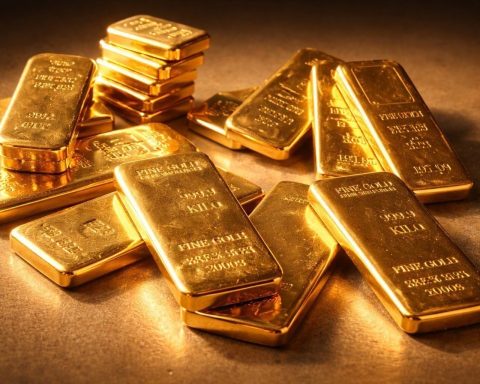- Stock surge: USAR has climbed ~100% YTD and was trading around $22.7 on Oct 3, 2025, spiking ~10% in pre-market trading on Oct 3 after CEO Barbara Humpton told CNBC the company was in “close discussions” with the White House [1]. This rally comes after aggressive newsflow on acquisitions and U.S. government support. As Reuters notes, USAR shares were already up roughly 98% for the year, giving it a market cap on the order of $2.6 billion [2] [3].
- Q2 2025 results: In Q2 (ended June 30), USAR reported an $8.8 M operating loss (vs. $3.0 M a year prior) and a net loss of $142.7 M, driven largely by non-cash items [4]. Importantly, the company closed the quarter with ~$121.8 M in cash and no significant debt [5] (up from $16.8 M a year ago), bolstered by recent fundraising. Management highlighted that USAR signed 12 new MOUs/JDAs in Q2 – enough to support ~300 tons/year of magnet production with customers in aerospace, defense, data centers and automotive [6]. The company is on track to commission its first magnet manufacturing line (in Stillwater, OK) by early 2026 [7].
- Acquisition of LCM: On Sept 29, 2025 USAR announced it will acquire UK-based Less Common Metals (LCM) – the only Western producer of rare-earth metals and alloys at scale – for $100 M cash plus 6.74 M USAR shares [8]. Management describes this as a “bold and transformative leap” toward an end-to-end U.S. rare-earth supply chain [9]. An existing investor also committed $125 M in fresh equity at $15/share to fund growth [10]. The deal (expected to close Q4 2025) secures critical midstream capabilities – e.g. strip-casting NdPr and SmCo alloy feedstock – to supply USAR’s Oklahoma magnet plant. Chairman Michael Blitzer said “Midstream metal making is the linchpin of the global supply chain, and LCM is the only proven ex-China producer at scale” [11].
- Leadership change: Longtime U.S. Army veteran and Siemens USA chief Barbara Humpton officially became CEO on Oct 1, 2025. The board said she brings decades of defense and infrastructure expertise, and would help navigate government partnerships [12]. Blitzer praised her as “an established global leader… including critical infrastructure, technology and strategic national defense” [13]. Joshua Ballard (who spearheaded earlier buildout efforts) remains on staff.
- Analyst outlook: Wall Street is generally bullish. Canaccord Genuity raised its USAR price target to $22 (from $21) on Sept 30 [14], and Cantor Fitzgerald boosted its target to $20 (from $16) after the strong Q2 report [15]. Roth Capital and Benchmark Capital also rate USAR a “Buy” (with targets in the mid-teens) [16]. The average analyst target (~$19–20) is above the pre-spike price, implying further upside if execution stays on track. Most analysts cite USAR’s pristine balance sheet and multibillion-dollar magnet market (heavy REE magnets alone are a ~$20 B global market by 2035) as reasons for optimism [17] [18].
- Rare-earth market: Rare-earth elements (REEs) are critical for high-tech magnets in EVs, wind turbines, defense, and electronics. Demand is surging: McKinsey projects magnetic REE demand to triple by 2035, driven by electric vehicle and renewable energy growth [19]. However, China still dominates the industry – it mines ~60% of REEs and refines over 80% of them [20]. In March-April 2025, China temporarily halted certain REE exports amid a U.S. trade dispute [21] [22], underscoring supply risks. That prompted U.S. policymakers (including invoking emergency powers) to accelerate domestic REE projects, benefiting companies like USAR [23] [24].
- Competitive landscape: USAR is now positioning itself as a vertically integrated rival to China’s magnet supply. Other players include MP Materials (NYSE: MP), which mines the Mountain Pass deposit in California and is moving downstream, and Australia’s Lynas (ASX: LYC) which refines light REEs. However, aside from USAR’s deal, nearly all Western magnet production is nascent. Rare-earth veterans warn that acquiring LCM could even create a new bottleneck: expert Jack Lifton notes that U.S. and European defense magnets will be covered by subsidies, but “the other 95%” of the magnet market (EVs, wind, etc.) “remain utterly dependent on China” [25]. He cautions that no other Western rare-earth metal plants are ready in the near term, so building out U.S. capacity will take years [26].
Stock Surge & Financials
USA Rare Earth’s stock has been on a tear. After trading around $5–6 at the start of 2025, it climbed steadily as the company hit milestones, and on Oct 3, 2025 it burst higher. In pre-market on Oct 3, shares jumped about 10% after CEO Barbara Humpton said USAR was in “close discussions” with the White House on critical minerals supply [27]. This echoes reports that the Trump administration (via emergency powers) is actively boosting domestic rare-earth projects, alongside stakes in lithium companies and deals with MP Materials [28] [29]. By midday Oct 3, Reuters noted USAR stock up ~9.6% on the news [30]. At current levels (~$22–23), USAR’s market cap is roughly $2.5–2.6 billion [31].
USAR’s latest financials reflect a pre-commercial growth stage. In Q2 2025 (reported Aug 11), USAR had $121.8 M cash on hand and no material debt [32]. Operating loss widened to $8.8 M (versus $3.0 M year-ago) due to ramped-up spending on engineering, R&D and site prep [33]. Non-GAAP adjusted loss was just $7.8 M (or $0.08 per share) [34]. Crucially, the company announced 12 new customer agreements in the quarter – spanning aerospace, defense, and data-center players – representing roughly 300 tons/year of future magnet output [35]. CEO Ballard commented that USAR is seeing “a surge of customer interest” as it prepares to start magnets in early 2026 [36]. Even before revenue generation begins, analysts have taken note of USAR’s strong balance sheet and investment plan. Cantor Fitzgerald pointed out that USAR could exit 2026 with >$350M in cash to fund expansion, while addressing a multi-billion-dollar market [37].
Strategic UK Acquisition and Funding
On September 29, USAR unveiled its biggest deal yet: a definitive agreement to buy Less Common Metals (LCM) of the UK [38]. LCM (Cheshire, England) is a 67,000 sqft plant producing high-grade rare-earth metals and alloys (e.g. samarium-cobalt, NdPr, dysprosium) – products not commercially made outside China before. USAR is paying $100 M cash plus 6.74 M USAR shares, and simultaneously raised $125 M through an existing investor at $15/share [39]. Including both the acquisition and equity raise, the deal package totals roughly $217 million, making USAR one of the best-capitalized junior REE companies. Management says the LCM purchase “completes our decades-long vision to establish an integrated rare-earth supply chain” [40]. USAR Chairman Michael Blitzer called it “a bold and transformative leap”: “Midstream metal making is the linchpin of the global supply chain, and LCM is the only proven ex-China producer at scale” [41]. Grant Smith, LCM’s outgoing chairman, added that combining LCM’s processing with USAR’s Texas Round Top mine and new Oklahoma magnet plant means USAR will be “uniquely positioned” as a true mine-to-magnet Western alternative [42].
This acquisition immediately gave USAR new revenue synergies and government links abroad. LCM has existing contracts and even recently secured a French government grant to expand samarium capacity. By supplying its Stillwater magnet factory with domestically produced strip-cast alloy, USAR can avoid buying critical feedstock from China or third parties. (Under an MOU announced in August, USAR will also supply Enduro Pipeline Services with U.S.-made NdFeB magnets for pipeline-inspection tools [43].) However, some analysts note the deal is temporarily dilutive – USAR’s 300-ton/year projection post-acquisition exceeds LCM’s current output – so near-term margins may shrink [44]. Over the long term, though, research firms expect the LCM deal to improve gross margins and capacity. Canaccord writes that the deal will help USAR “generate revenue” and “solidify leadership” in the sector [45] [46]. The stock’s sharp rise on Sept 29 reflected investors’ approval: USAR jumped 23.4% that day [47], hitting a 52-week high as buyers eyed the strategic upside.
Management and Analyst Outlook
Leadership changes have also grabbed headlines. On Sept 26, USAR announced that veteran executive Barbara Humpton (ex-Siemens USA) would succeed Josh Ballard as CEO, effective Oct 1 [48]. Humpton’s arrival – backed by board chairman Blitzer – signals a focus on government partnerships and scaling. Blitzer said Humpton’s “years of experience engaging with government entities” make her ideal for this era [49]. Institutional investors have responded warmly, given Humpton’s national security background and the timing (just as Washington pushes critical minerals).
Sell-side firms remain overwhelmingly positive. Canaccord (which covers USAR) calls it an Overweight/Buy stock, maintaining that rating after lifting its target to $22 [50]. Cantor Fitzgerald (also Buy) raised its target to $20based on Q2 results [51]. Benchmark Capital reaffirms a Buy (PT ~$15) citing strong preorders and demand [52], and Roth Capital (Buy) recently launched coverage with a $15 target. In aggregate, three published analysts rate USAR a Buy [53] and the average price target (~$18) still exceeds most estimates of near-term value. Importantly, analysts note that even if short-term profitability is low, USAR is building a strategic platform in a high-barrier market. Cantor Fitzgerald emphasizes that USAR’s disclosed 300-ton demand pipeline suggests robust domestic orders [54], and that government funding could “accelerate” growth.
On the flip side, some caution remains. One analyst (Wall Street Zen) recently downgraded USAR to Sell, arguing that the stock’s run-up may have outpaced fundamentals. Veteran investor Jack Lifton warns that even with USAR’s deal, the broader U.S. supply chain still lacks capacity: he notes that aside from defense magnets (only ~5% of demand), the vast majority of the magnet market “remain utterly dependent on China” [55]. Lifton has bluntly said “there are no operating or credibly planned [Western] rare earth metal or magnet plants for the consumer market in the near term,” implying the road ahead is long [56].
Rare-Earth Industry Context
Understanding USAR’s prospects requires seeing the big picture: the rare-earth industry is at the nexus of technology and geopolitics. These 17 elements (like neodymium, praseodymium, dysprosium, etc.) are critical in “permanent magnets” used in electric cars, wind turbines, robotics, defense (radar, guidance), and more. Global demand is exploding: McKinsey projects magnetic-REE demand jumping from ~59 kt in 2022 to 176 kt by 2035 [57], driven by EV and renewable growth. Without new sources, models show a looming shortage of up to 30% of demand by mid-2030s [58].
Currently, China dominates at every step. It mines about 60% of REEs and refines over 80% of them [59]. In early 2025, amid U.S.-China trade tensions, China briefly imposed rare-earth export limits (for example in April 2025) [60]. This disruption forced U.S. automakers to scramble – shipments of Chinese REE magnets to the U.S. fell sharply in April, only partly rebounding by June [61]. Policymakers in Washington have therefore made rare-earth independence a priority: a “critical minerals” law now provides price support and incentives for projects, and the executive branch has signaled its willingness to use emergency powers to secure supply [62] [63]. Recent examples include the U.S. Treasury taking stakes in lithium projects and approving a $3 B loan to MP Materials for magnet production. All of this policy tailwind indirectly benefits USAR as one of the few companies building an end-to-end U.S. rare-earth/magnet chain.
In contrast to USAR, legacy players have different positions. MP Materials (NYSE: MP) operates the Mountain Pass mine in California, which produced ~45,000 t of rare-earth oxide in 2024 [64]. MP is now also moving downstream (a government-backed magnet plant) but its focus has been more on light rare earths. Lynas Corp (ASX: LYC) is the largest non-Chinese producer of separated REEs (light REEs) at its Malaysian plant. Other juniors (Energy Fuels, Ucore, Texas Rare Earths, etc.) are exploring processing in North America. USAR’s unique angle is to control mining, refining, alloy production, and magnet manufacturing – a true “mine-to-magnet” model. If it pulls it off, analysts argue USAR could become the premier Western REE supplier.
But the investor newsletter Critical Minerals & Rare Earths notes a potential downside: LCM used to be a neutral supplier for many Western magnet makers. Now, if LCM’s output is largely captive to USAR’s own plant, other projects (like a Pentagon-backed German magnet factory) could face tighter alloy access [65]. In effect, USAR’s gain may strain others. The U.S. and allies may ultimately need multiple players. For now, though, USAR is pitching the LCM deal as a geopolitical win: combining a Texas mine, a UK alloy plant, and a U.S. magnet factory creates the first such integrated chain outside China [66], which could attract further government support.
Analyst Forecasts & Outlook
Most analysts see USAR’s path to profitability as multi-year but promising. The consensus is that the stock can continue rising if the company executes on the LCM integration and brings magnets online. Key points they emphasize:
- Sales Ramp: USAR has disclosed demand contracts for its first 1,200 tons of magnets (on track for early 2026). Analysts expect revenue ramp once the plant starts. Cantor Fitzgerald’s model assumes high magnet pricing and sees “healthy growth potential beyond 2035” in demand, justifying its $20 target [67].
- Balance Sheet: With ~$125–130M cash now (post equity raise) against minimal debt, USAR can fund the Stillwater plant and LCM integration. Canaccord notes the company’s current ratio is a healthy 15:1 [68]. Cantor Fitzgerald even projects >$350M cash by end-2026 (as the plant scales) [69].
- Margins: Initially weak (negative gross margin due to construction costs and one-time charges) but analysts believe margins will improve markedly after LCM’s integration. Canaccord expects LCM’s alloys will significantly boost USAR’s magnet production economics [70].
- Valuation: On a DCF basis, Canaccord (14% WACC, 6% terminal growth) still arrives at a mid-to-high teens target, citing a large $20B+ addressable market for heavy magnets [71]. They see upside to $22 if everything comes together [72].
Overall, the consensus is that 2025 and 2026 will be capex-heavy years with widening losses, but by 2027–28 analysts forecast USAR could start generating significant magnet revenues as China’s supply constraints and government support power higher prices. As one broker put it, USAR’s moves have “reinforced our thesis” that it can be a major domestic supplier [73]. In the shorter term, any further catalysts could include positive results from the Stillwater plant commissioning or additional government contracts/subsidies. Notably, the Biden/Trump-led critical minerals agenda remains bipartisan, so USAR may continue to benefit from broader national security investment trends.
Expert Commentary
Industry experts offer mixed takes. USAR’s own management is bullish: CEO Joshua Ballard has emphasized that “we are seizing this pivotal moment” in the REE/magnet industry, with a strong capital position to scale rapidly [74]. In PR interviews, USAR execs stress that an independent Western supply chain is now emerging, and they believe USAR can be at its center.
Observers outside the company applaud the strategy but warn of challenges. In a recent InvestorNews piece, analyst Jack Lifton (Critical Minerals Institute) notes that USAR’s consolidation of LCM may inadvertently harm other Western projects, since LCM is no longer a neutral supplier [75]. He also underscores that apart from defense-related demand (which is well-funded), the much larger commercial magnet market “remains utterly dependent on China” [76]. Lifton’s view is that until multiple new Western plants come online, market tightness will persist: “There are no operating or credibly planned [Western] rare earth metal or magnet plants for the consumer market in the near term,” he observes [77].
In the government arena, there is strong encouragement. For example, USA Rare Earth was highlighted in Reuters and AP Finance as a domestic miner benefiting from Trump’s critical minerals push [78] [79]. The Reuters story on Oct 3 quoted how Trump invoked emergency powers for minerals [80], and pointed out that USAR has a Texas deposit (Round Top) and soon an Oklahoma magnet line [81]. Such coverage reinforces the narrative that USAR is aligned with strategic priorities.
Finally, trade publications note that USAR is receiving institutional attention. A MarketBeat summary highlights that even insiders believe in the story: board chair Michael Blitzer (whose firm set up USAR) still owns a huge stake (over 40%) and has recently sold shares, suggesting confidence in managing the float [82]. Hedge funds are also accumulating (Newtyn, Geode, etc. reporting new positions) [83]. All told, experts see USAR as a small but pivotal player in the rare-earth resurgence. If the magnet plant and LCM integration succeed, USAR could become a linchpin of Western tech supply chains – a turnaround from a year ago when it was a sub-$10 stock with no production.
Sources: USAR Q2 2025 financial results and company press releases [84] [85] [86]; Reuters, Investing.com, and financial media reports [87] [88] [89]; industry analyses [90] [91]. All data are current as of Oct. 3, 2025.
References
1. www.reuters.com, 2. www.reuters.com, 3. www.reuters.com, 4. finviz.com, 5. finviz.com, 6. finviz.com, 7. finviz.com, 8. finviz.com, 9. finviz.com, 10. finviz.com, 11. investornews.com, 12. www.hstoday.us, 13. www.hstoday.us, 14. www.investing.com, 15. www.investing.com, 16. www.investing.com, 17. www.investing.com, 18. www.investing.com, 19. carboncredits.com, 20. carboncredits.com, 21. www.reuters.com, 22. carboncredits.com, 23. www.reuters.com, 24. carboncredits.com, 25. investornews.com, 26. investornews.com, 27. www.reuters.com, 28. www.reuters.com, 29. www.investing.com, 30. www.reuters.com, 31. www.reuters.com, 32. finviz.com, 33. finviz.com, 34. finviz.com, 35. finviz.com, 36. finviz.com, 37. www.investing.com, 38. finviz.com, 39. finviz.com, 40. investornews.com, 41. investornews.com, 42. investornews.com, 43. www.investing.com, 44. www.investing.com, 45. finviz.com, 46. www.investing.com, 47. finviz.com, 48. www.investing.com, 49. www.hstoday.us, 50. www.investing.com, 51. www.investing.com, 52. www.investing.com, 53. www.marketbeat.com, 54. www.investing.com, 55. investornews.com, 56. investornews.com, 57. carboncredits.com, 58. carboncredits.com, 59. carboncredits.com, 60. carboncredits.com, 61. carboncredits.com, 62. www.reuters.com, 63. carboncredits.com, 64. carboncredits.com, 65. investornews.com, 66. investornews.com, 67. www.investing.com, 68. www.investing.com, 69. www.investing.com, 70. www.investing.com, 71. www.investing.com, 72. www.investing.com, 73. www.investing.com, 74. finviz.com, 75. investornews.com, 76. investornews.com, 77. investornews.com, 78. www.reuters.com, 79. www.investing.com, 80. www.reuters.com, 81. www.reuters.com, 82. www.marketbeat.com, 83. www.marketbeat.com, 84. finviz.com, 85. finviz.com, 86. finviz.com, 87. www.reuters.com, 88. www.investing.com, 89. www.investing.com, 90. investornews.com, 91. carboncredits.com










